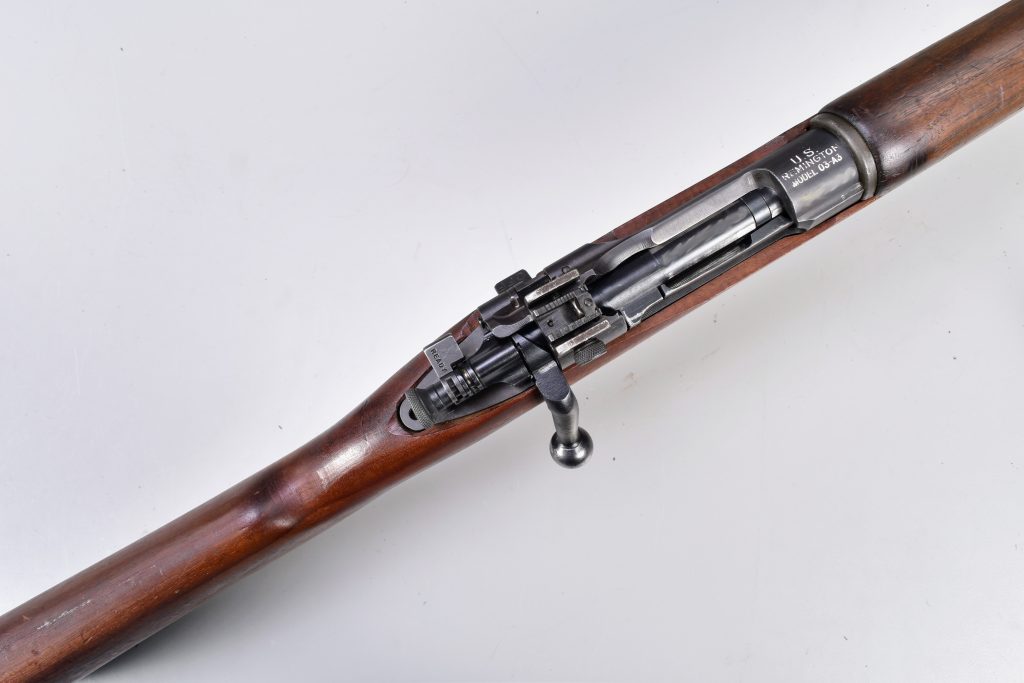M1903/M1903A3 Rifle Information
Reclaimed M1903/M1903A3 Rifles – Coming Soon!
For more information on the CMP Drill Receiver Reclamation Initiative, please visit https://thecmp.org/the-cmp-drill-rifle-initiative/.
History of M1903/M1903A3 Rifles
The U.S. M1903 and M1903A3 “Springfield” rifles are the greatest of all U.S. military issue bolt action rifles. This series of rifles was originally issued to the many proud and selfless Americans that answered freedom’s call during World War I, World War II, and the Korean War. The rifles continued to serve as ceremonial rifles by veterans’ organizations such as the VFW, AL, DAV and many others.

CMP SALES OF THE M1903/M1903A3 SPRINGFIELD RIFLES

| ITEM # | DESCRIPTION | PRICE |
| TBA | Coming Soon! | Coming Soon! |
All sales are AS-IS with NO RETURNS OR EXCHANGES.

WARNING!
Dear CMP Family,
The CMP advises to not use .30/06 ammunition in M1 Garands, 1903s, and 1903A3s that is loaded beyond 50,000 CUP and has a bullet weight more than 172-174gr. These rifles are at least 70 years old and were not designed for max loads and super heavy bullets. Always wear hearing and eye protection when firing an M1 Garand, 1903 and/or 1903A3 rifle.
This warning is an update/addition to the Ammunition section in the Read This First manual enclosed with each rifle shipment (M1 Garand manual-page 6 and M1903 manual-page 10).
Civilian Marksmanship Program
WARNING ON “LOW-NUMBER” M1903 SPRINGFIELDS
M1903 rifles made before February 1918 utilized receivers and bolts which were single heat-treated by a method that rendered some of them brittle and liable to fracture when fired, exposing the shooter to a risk of serious injury. It proved impossible to determine, without destructive testing, which receivers and bolts were so affected and therefore potentially dangerous.
To solve this problem, the Ordnance Department commenced double heat treatment of receivers and bolts. This was commenced at Springfield Armory at approximately serial number 800,000 and at Rock Island Arsenal at exactly serial number 285,507. All Springfields made after this change are commonly called “high number” rifles. Those Springfields made before this change are commonly called “low-number” rifles.
In view of the safety risk, the Ordnance Department withdrew from active service all “low-number” Springfields. During WWII, however, the urgent need for rifles resulted in the rebuilding and reissuing of many “low-number” as well as “high-number” Springfields. The bolts from such rifles were often mixed during rebuilding, and did not necessarily remain with the original receiver.
Generally speaking, “low number” bolts can be distinguished from “high-number” bolts by the angle at which the bolt handle is bent down. All “low number” bolts have the bolt handle bent straight down, perpendicular to the axis of the bolt body. High number bolts have “swept-back” (or slightly rearward curved) bolt handles.
A few straight-bent bolts are of the double heat-treat type, but these are not easily identified, and until positively proved otherwise ANY straight-bent bolt should be assumed to be “low number”. All original swept-back bolts are definitely “high number”. In addition, any bolt marked “N.S.” (for nickel steel) can be safely regarded as “high number” if obtained directly from CMP (beware of re-marked fakes).
CMP does not recommend firing any Springfield rifle with a ”low number” receiver. Such rifles should be regarded as collector’s items, not “shooters.”
CMP also does not recommend firing any Springfield rifle, regardless of serial number, with a single heat-treated “low number” bolt. Such bolts, while historically correct for display with a rifle of WWI or earlier vintage, may be dangerous to use for shooting.
The United States Army generally did not serialize bolts. Do not rely on any serial number appearing on a bolt to determine whether such bolt is “high number” or “low number.”